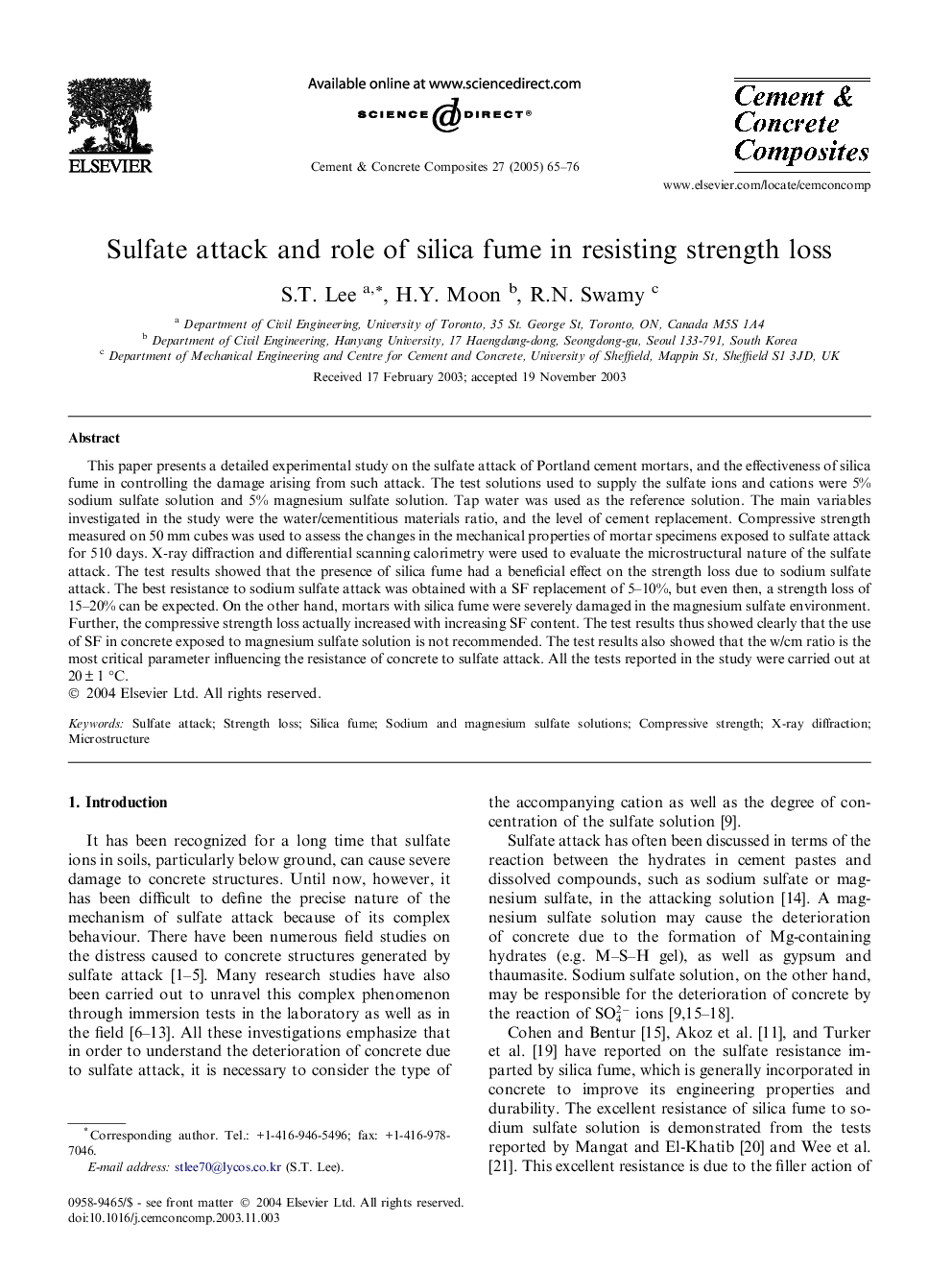| Article ID | Journal | Published Year | Pages | File Type |
|---|---|---|---|---|
| 10621965 | Cement and Concrete Composites | 2005 | 12 Pages |
Abstract
This paper presents a detailed experimental study on the sulfate attack of Portland cement mortars, and the effectiveness of silica fume in controlling the damage arising from such attack. The test solutions used to supply the sulfate ions and cations were 5% sodium sulfate solution and 5% magnesium sulfate solution. Tap water was used as the reference solution. The main variables investigated in the study were the water/cementitious materials ratio, and the level of cement replacement. Compressive strength measured on 50 mm cubes was used to assess the changes in the mechanical properties of mortar specimens exposed to sulfate attack for 510 days. X-ray diffraction and differential scanning calorimetry were used to evaluate the microstructural nature of the sulfate attack. The test results showed that the presence of silica fume had a beneficial effect on the strength loss due to sodium sulfate attack. The best resistance to sodium sulfate attack was obtained with a SF replacement of 5-10%, but even then, a strength loss of 15-20% can be expected. On the other hand, mortars with silica fume were severely damaged in the magnesium sulfate environment. Further, the compressive strength loss actually increased with increasing SF content. The test results thus showed clearly that the use of SF in concrete exposed to magnesium sulfate solution is not recommended. The test results also showed that the w/cm ratio is the most critical parameter influencing the resistance of concrete to sulfate attack. All the tests reported in the study were carried out at 20 ± 1 °C.
Related Topics
Physical Sciences and Engineering
Engineering
Industrial and Manufacturing Engineering
Authors
S.T. Lee, H.Y. Moon, R.N. Swamy,
